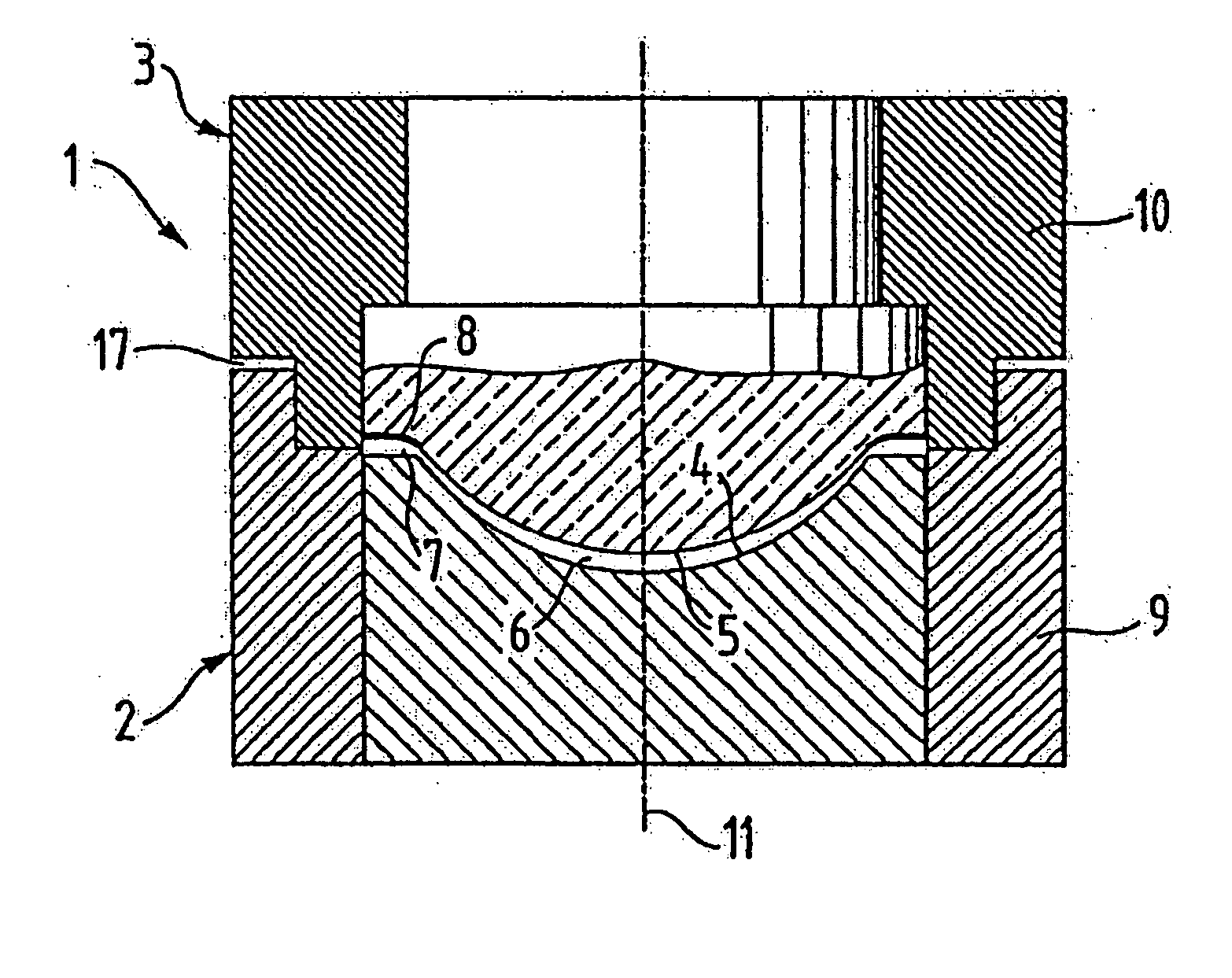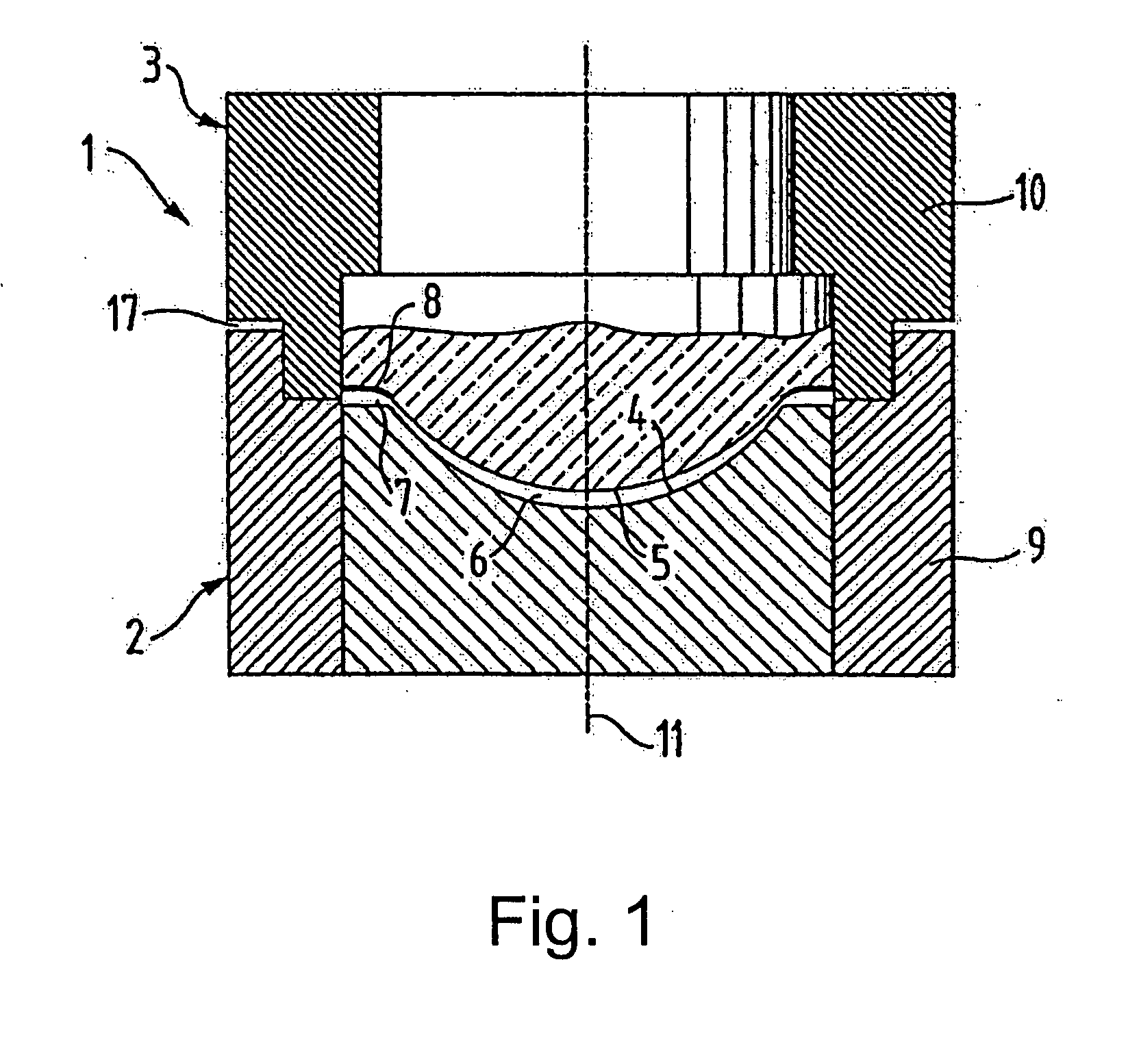Method for making contact lenses
a contact lens and mold technology, applied in the field of contact lens manufacturing, can solve the problems of high manufacturing cost of contact lenses, molds partially contaminated by surplus materials, damage, etc., and achieve the effect of high precision and fidelity, high edge quality
- Summary
- Abstract
- Description
- Claims
- Application Information
AI Technical Summary
Benefits of technology
Problems solved by technology
Method used
Image
Examples
example 1
Determination of the induction period, prior to the on-set of crosslinking processes caused by the presence of a radical scavenger, such as 4-hydroxy-2,2,6,6-tetramethylpiperpiperindinyloxy, free radical and determination of the incident energy required to actinically fully crosslink a reactive and fluid macromolecular species upon consumption of the free radical scavenger, to form a contact lens are performed by photo-rheological and spectroscopic methodologies.
Photorheology measurements are conducted on a modified StressTech Rheometer, manufactured by ReoLogica Instruments, to measure shear modulus. Shear modulus is recorded through using a parallel plate arrangement, wherein the upper plate and the base plate are quartz plates, through which UV irradiation from a light source can pass and be absorbed by a photoinitiator to form reactive species that will initiate free radical crosslinking polymerization. The light source is a UV-IQ400 manufactured by Dr. Groebel UV Electronic ...
example 2
Fluid compositions (formulations) comprising Nelfilcon A (a water-soluble, crosslinkable polyvinylalcohol from CIBA Vision), water, photoinitiator (Irgacure 2959; Ciba Specialty Chemicals), 4-hydroxy-2,2,6,6-tetramethylpiperpiperindinyloxy, free radical (HO-TEMPO; Aldrich Chemicals) and Synperonic PE / F38 (Uniqemia) are prepared in quantities detailed in Table 1 below.
TABLE 1Formula-NelfilconIrgacureHO-tionAWater2959TEMPOSynperonicNo.(Wt %)(Wt %)(Wt %)(Wt %)PE / F38 (Wt %)13069.460.030.001250.523069.470.03—0.5
Lenses are prepared as follows. 45-65 mg of a fluid composition (formulation 1 or 2) is introduced into the cavity of a female mold half as illustrated in FIG. 2 and a male mold (FIG. 3) placed on top to form the mold configuration a shown in FIG. 1. UV light is impinged on the mold arrangement shown in FIG. 1. The light source is a UV-IQ400 manufactured by Dr. Groebel UV Electronic GmbH, fitted with a Phillip HPA-400 / 30S bulb. Light from the source is directed down a light gu...
PUM
| Property | Measurement | Unit |
|---|---|---|
| molecular weights | aaaaa | aaaaa |
| induction time | aaaaa | aaaaa |
| molding | aaaaa | aaaaa |
Abstract
Description
Claims
Application Information
 Login to View More
Login to View More - R&D
- Intellectual Property
- Life Sciences
- Materials
- Tech Scout
- Unparalleled Data Quality
- Higher Quality Content
- 60% Fewer Hallucinations
Browse by: Latest US Patents, China's latest patents, Technical Efficacy Thesaurus, Application Domain, Technology Topic, Popular Technical Reports.
© 2025 PatSnap. All rights reserved.Legal|Privacy policy|Modern Slavery Act Transparency Statement|Sitemap|About US| Contact US: help@patsnap.com



